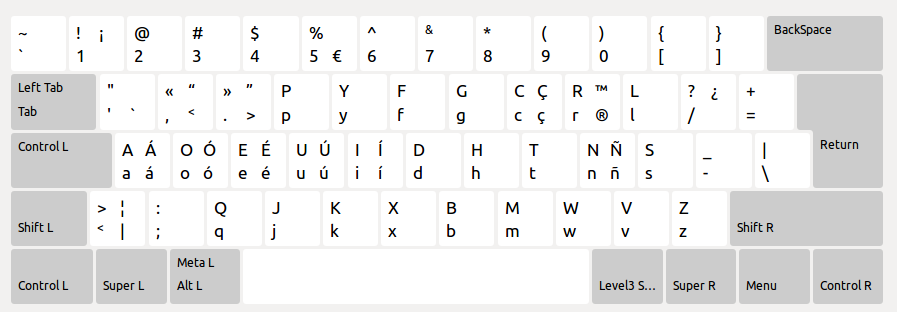On November 2016 I had a free month between jobs. Apart from some resting, reading, and general preparations for my new adventure, I still had quite a bit of free time to do new things or build good habits. It was while cleaning my office that I found a keyboard I had bought a couple of years back:

Its layout was a beautiful matrix -which is good for your fingers- and came with Dvorak by default. So it struck me: how about improving my typing during the coming weeks?
As a programmer, typing is an essential skill for me. I had been doing it for more than 15 years in a learn-by-doing way, and I plan to keep typing for years to come. I thought it would be fun to spend a couple of hours a day training in touch-typing and give Dvorak a second try. And so I did.
How it felt
Before I switched, I recorded about 15 typing sessions at TypeRacer using the QWERTY layout, which logs typing speed (words per minute) and accuracy (% characters right over the total). I was at 67 wpm and about 95% accuracy at the time.
Progress was very humbling at the beginning; it felt like learning to walk again, and I swear that, sometimes, I could even hear my brain circuits being reconfigured! After a few weeks, though, I was at 40 wpm and, by the end of the month, I was at 50 wpm. I stopped quantifying myself by then: as I started working, I had a lot of typing to do anyway.
During the first months, real-time communication -chat, slack- was the only moment I struggled and felt like perhaps the switch wasn’t a good idea. I don’t know what people thought of me, but my writing at the time was typing-bounded – I was certainly a very slow touch-typist by my own standards. But time passed and I improved.
Spáñish Dvorak and symbols
Throughout the process I changed my setup quite a bit:
- I started by using the Programmer Dvorak layout with a TypeMatrix keyboard.
- After a few months, I switched back to my good old ThinkPad keyboard because having to use a mouse again after years without it was painful.
- A few months later, I switched to the Dvorak international layout, because the Programmers Dvorak didn’t quite suit me.
- Then, I tweaked the common symbols I use for programming so they were more ergonomic for my daily tasks.
- Although the bulk of my typing is in English, I still need to write decent Spáñish, which basically means using tildes on vowels and ñ so I switched to the Spanish Dvorak.
- Finally, Spanish Dvorak wasn’t the improvement I was looking for, so I’ve ended up accommodating tildes, ñ, and other symbols in the Dvorak international as I see fit.
This is how my layout looks like today:

All these changes through the year have affected my ability to build muscle memory – sometimes I still need to look at some specific symbol on the keyboard. However, the current version has been unchanged for months, so I only need a bit more time for them to stick.
Performance to date
Given that I was a QWERTY user for 15 years, I thought I would give the new layout a year before comparing any numbers. The fair thing to do would be comparing after 15 years, but I’m a bit impatient for that. So I went to TypeRacer and noted down the results for about 20 races:


In terms of speed, it looks like I’m
In terms of accuracy, I’ve improved a bit. My median accuracy has increased by 1,5 points, and I had only 2 sessions below 95%.
Coda
My accuracy has improved, and having fewer mistakes to correct will help me become a faster typist as time passes. By learning to touch-type I also have grown more endurance.
This experiment was very humbling. I believe it increased my brain plasticity by an order of magnitude. Although I hope to improve my numbers, what’s
Leave a Reply